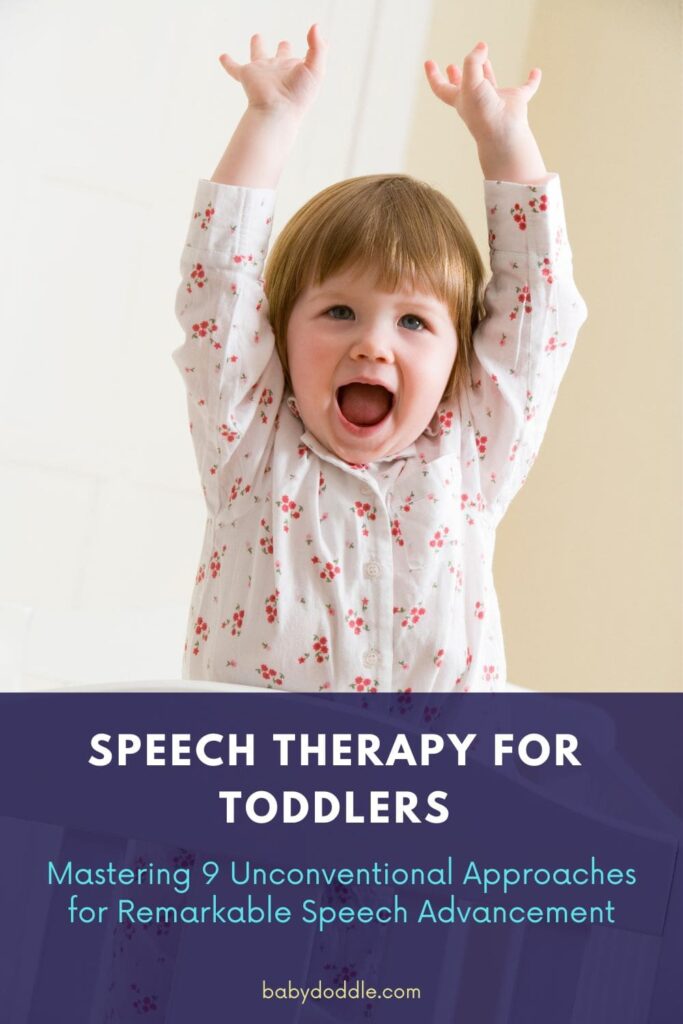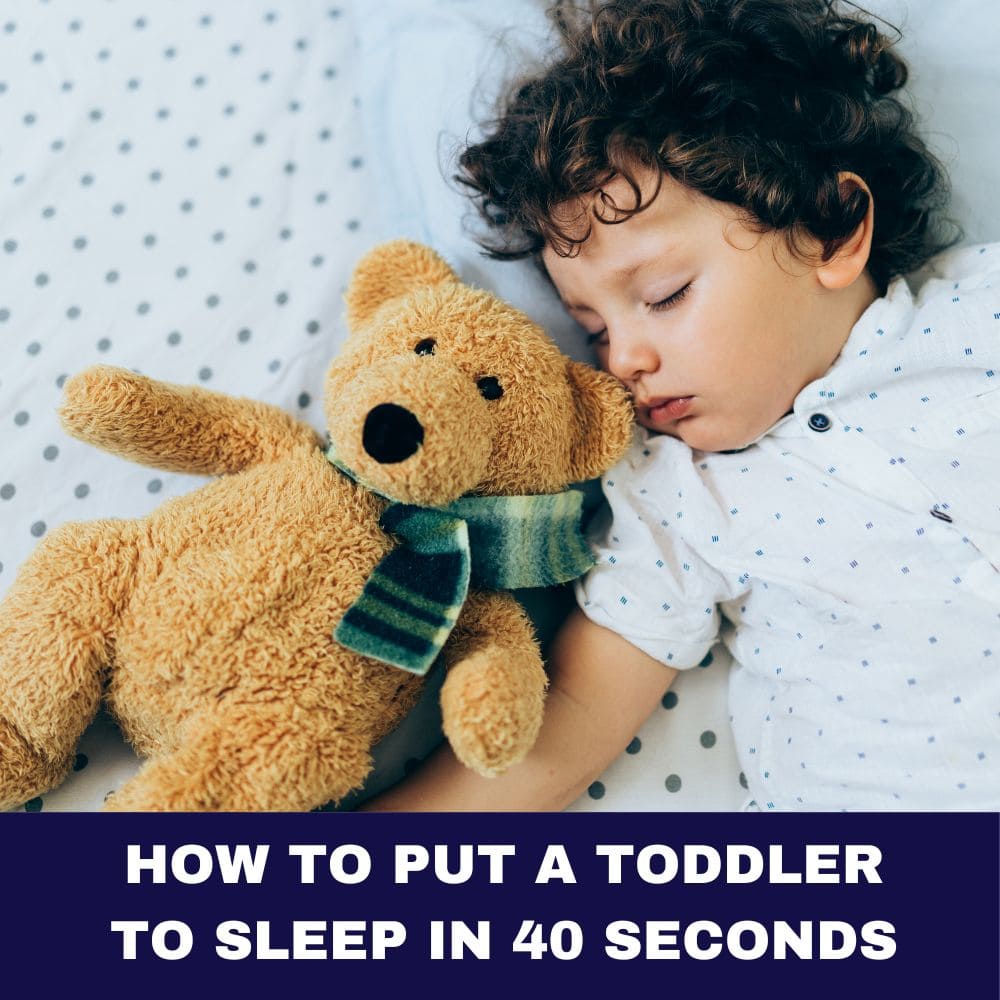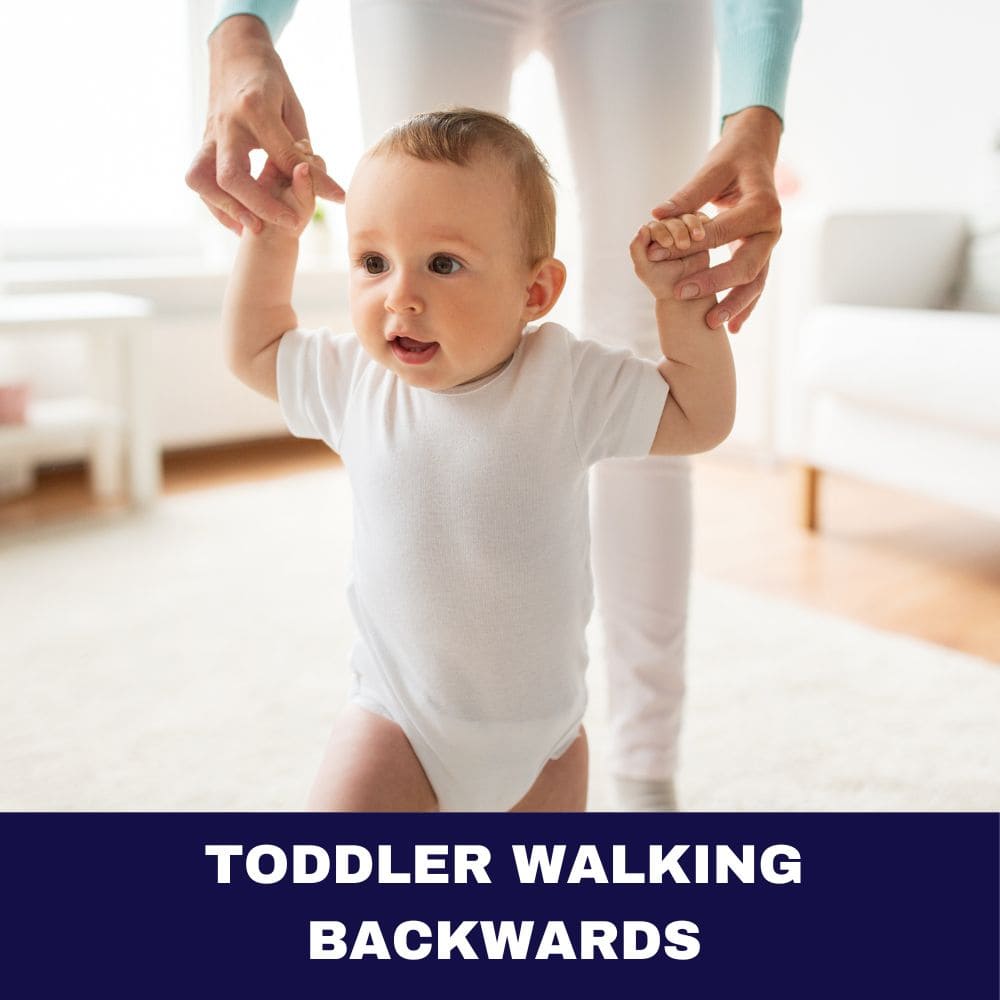Have you ever watched a toddler struggle to communicate their thoughts and needs? It can be a heart-wrenching experience for parents, filled with frustration and concern. Unfortunately, speech and language delays are more common than you might think, affecting around 1 in 12 children by the age of 3. But fear not, dear reader – speech therapy can work wonders in helping your little one find their voice.
While traditional speech therapy techniques have proven effective for many toddlers, some children respond better to unconventional approaches that tap into their unique learning styles and interests. In this comprehensive guide, we’ll explore nine innovative methods that speech therapists are using to help toddlers achieve remarkable speech advancement.

Understanding Speech and Language Delays in Toddlers
Before we dive into unconventional therapy techniques, let’s first understand what constitutes typical speech and language development milestones. By 12 months, most toddlers can respond to simple verbal requests, say a few words, and use gestures to communicate. By 24 months, their vocabulary should expand to around 200 words, and they should be able to combine words into simple phrases.
However, every child develops at their own pace, and some may experience delays due to various factors, such as hearing loss, physical disabilities, or developmental disorders like autism spectrum disorder. If your toddler is not meeting these milestones, it’s essential to seek professional help from a speech-language pathologist (SLP).
| Age | Speech and Language Milestones |
|---|---|
| 12 months | – Responds to simple verbal requests – Says a few words – Uses gestures to communicate |
| 18 months | – Vocabulary of around 20 words – Follows simple instructions – Points to objects when named |
| 24 months | – Vocabulary of around 200 words – Combines words into simple phrases – Asks simple questions |
| 36 months | – Vocabulary of around 1000 words – Uses plurals and pronouns – Engages in back-and-forth conversations |
How to Know if Your Toddler Needs Speech Therapy
If you notice any of the following signs, it may be time to consult a speech therapist:
- Limited vocabulary for their age
- Difficulty imitating sounds or words
- Inability to follow simple instructions
- Frequent stuttering or repetition of sounds
- Frustrated attempts to communicate
An SLP can conduct a comprehensive evaluation to assess your toddler’s communication skills and determine if speech therapy is necessary.
Next step: Don’t hesitate to voice your concerns to your pediatrician or seek a referral to a speech-language pathologist if you suspect a delay.
| Signs to Watch For |
|---|
| Limited vocabulary for their age |
| Difficulty imitating sounds or words |
| Inability to follow simple instructions |
| Frequent stuttering or repetition of sounds |
| Frustrated attempts to communicate |
| Lack of gestures or eye contact |
| Difficulty understanding questions or directions |
How Does A Speech Therapist Evaluate A Toddler?
When you take your toddler for an initial evaluation, the SLP will use a combination of standardized tests, observations, and parent interviews to assess their speech and language skills. They may evaluate:
- Articulation (ability to produce speech sounds)
- Receptive language (ability to understand spoken language)
- Expressive language (ability to use language to communicate)
- Social communication (pragmatic language skills)
The therapist will also consider your toddler’s cognitive abilities, hearing status, and any other relevant factors that could impact their communication development.
Next step: Be prepared to provide detailed information about your toddler’s developmental history and any concerns you may have.
What to Expect During Speech Therapy Sessions
Speech therapy sessions for toddlers are typically fun and engaging, incorporating a variety of play-based activities and repetition to reinforce skills. Here’s what you can expect:
- Use of toys, books, and games to capture your toddler’s interest
- Modeling of correct speech sounds and language patterns
- Opportunities for your toddler to practice and receive immediate feedback
- Involvement of caregivers to ensure consistency and carry-over at home
Sessions may last anywhere from 30 minutes to an hour, depending on your toddler’s age and attention span. Consistency is key, so regular attendance and practice at home are crucial for progress.
Next step: Don’t be afraid to ask the therapist for specific activities or strategies you can use at home to support your toddler’s speech development.
The Benefits of Unconventional Speech Therapy Approaches
While traditional speech therapy techniques can be effective, some toddlers may respond better to unconventional approaches that cater to their unique learning styles and interests. These methods can:
- Increase engagement and motivation
- Address underlying issues that may be contributing to speech delays
- Provide personalized strategies tailored to your toddler’s needs
By thinking outside the box, speech therapists can unlock remarkable progress and help your toddler develop their communication skills in a way that feels natural and enjoyable.
| Technique | Description |
|---|---|
| Music and Rhythm | Using songs, chants, and rhythmic activities to develop auditory processing, articulation, and language skills. |
| Multisensory Learning | Engaging multiple senses through tactile, visual, and kinesthetic activities to reinforce speech and language concepts. |
| Toddler-Led Play | Following the child’s lead and incorporating their interests into play-based therapy sessions. |
| Storytelling | Using puppets, props, and imaginative narratives to develop expressive language, vocabulary, and sequencing abilities. |
| Technology and AAC | Incorporating tablets, apps, and augmentative communication devices to supplement therapy and provide alternative communication methods. |
| Sensory Integration | Implementing strategies like deep pressure, swinging, and proprioceptive input to improve focus and attention. |
1. Incorporating Music and Rhythm
Music has a powerful impact on the developing brain, and many speech therapists are using it as a tool to enhance auditory processing skills, improve articulation, and make therapy sessions more engaging for toddlers.
Through singing, chanting, and rhythmic activities, toddlers can practice speech sounds, develop a sense of timing and pacing, and associate language with positive emotions. The repetitive nature of songs and rhymes also reinforces language patterns, making them easier to remember and reproduce.
Case Study: Sarah, a 3-year-old with a severe articulation disorder, struggled to engage in traditional speech therapy sessions. Her therapist began incorporating music, using familiar tunes to practice target sounds and phrases. Within a few months, Sarah’s articulation improved significantly, and she looked forward to her “music time” each week.
Next step: Incorporate singing, clapping games, and dancing into your daily routine to reinforce speech and language skills in a fun and natural way.

2. Exploiting Multisensory Learning
For many toddlers, learning is enhanced when multiple senses are engaged. By incorporating tactile, visual, and kinesthetic activities into speech therapy sessions, therapists can reinforce speech and language concepts in a way that resonates with multisensory learners.
Activities like finger painting, playing with textured objects, and using physical movements to represent concepts can help solidify language connections in the brain. For example, a therapist might have a toddler practice the word “jump” while physically jumping, or use shaving cream to trace letter shapes while saying the corresponding sounds.
Case Study: Jake, a 2-year-old with a language delay, struggled to understand and follow simple instructions. His therapist began using a multisensory approach, incorporating objects, gestures, and physical prompts to help him connect language with meaning. Within a few months, Jake’s receptive language skills improved significantly, and he could follow multi-step directions.
Next step: Incorporate multisensory activities into playtime, such as using play dough to reinforce vocabulary or acting out action words with your body.
Where Does Speech Therapy for Toddlers Happen?
Speech therapy for toddlers can take place in a variety of settings, depending on your child’s needs and the services available in your area. Some common options include:
- Private speech therapy clinics or outpatient centers
- Early intervention programs or preschools
- Home-based therapy services
- Hospital-based clinics or rehabilitation centers
The setting may also depend on the severity of your toddler’s speech delay and any other developmental or medical concerns. For example, children with more complex needs may receive therapy in a hospital or specialized clinic, while those with milder delays may attend sessions at a local preschool or private practice.
Next step: Research the different speech therapy options in your area and discuss with your pediatrician or the therapist to determine the best setting for your toddler.
Is My Toddler’s Session Going to be in a Group or Alone?
Both individual and group speech therapy sessions can be beneficial for toddlers, depending on their specific needs and goals. Here are some factors to consider:
Individual Therapy:
- Provides one-on-one attention and personalized support
- Allows for a tailored approach to target your toddler’s specific needs
- Minimizes distractions and helps maintain focus
Group Therapy:
- Promotes social interaction and peer modeling
- Provides opportunities to practice communication in a natural setting
- Can be more cost-effective, depending on your insurance coverage
Many speech therapists will recommend a combination of individual and group sessions to maximize progress and generalization of skills.
Next step: Discuss with the therapist whether individual, group, or a combination of sessions would be most beneficial for your toddler.
Do I Go Back with My Child During Therapy or Wait in the Waiting Room?
The involvement of caregivers during speech therapy sessions can vary depending on the therapist’s approach and your toddler’s needs. Here are some common scenarios:
- Caregiver Participation: In many cases, caregivers are encouraged to participate in at least part of the session to learn techniques and strategies for reinforcing skills at home.
- Observation: Some therapists may prefer that caregivers observe sessions from a separate room or through a one-way mirror to avoid distractions.
- Waiting Room: For older or more independent toddlers, caregivers may be asked to wait in the waiting room during the session.
Regardless of the setup, most speech therapists will provide regular updates and guidance on how to support your toddler’s progress at home.
Next step: Don’t hesitate to discuss your preferences with the therapist, as open communication and collaboration are key to your toddler’s success.
3. Leveraging Toddler-Led Play
One of the most effective ways to engage toddlers in speech therapy is by following their lead and incorporating their interests into play-based activities. When children are motivated and focused on something they enjoy, they are more receptive to learning and practicing new skills.
During toddler-led play therapy sessions, the therapist will observe your child’s natural play patterns and communication attempts, then strategically model and reinforce target language skills within that context. For example, if your toddler loves playing with cars, the therapist might use car-themed books, toys, and games to practice vocabulary, sentence structure, or social communication.
Case Study: Emma, a 2.5-year-old with a language delay, often became distracted and disengaged during structured therapy activities. Her therapist began incorporating Emma’s love of pretend play into their sessions, using dolls, dress-up clothes, and imaginative scenarios to target language goals. Emma’s attention span and motivation improved significantly, and her language skills progressed rapidly.
Next step: Observe your toddler’s play patterns and favorite activities, then try to incorporate those interests into language-rich experiences at home.
4. Harnessing the Power of Storytelling
Storytelling is a powerful tool for developing language and literacy skills in toddlers. By using puppets, props, and imaginative narratives, speech therapists can create engaging contexts for practicing expressive language, vocabulary, and sequencing abilities.
Through interactive storytelling, toddlers can learn to describe characters and events, retell stories in their own words, and answer comprehension questions. The use of visual aids and props also helps to reinforce language concepts and make abstract ideas more concrete.
Case Study: Ben, a 3-year-old with autism spectrum disorder, struggled with expressive language and maintaining eye contact during therapy sessions. His therapist introduced storytelling with props and puppets, which immediately captured Ben’s interest. Over time, Ben began to participate in the storytelling process, describing the characters’ actions and emotions, and maintaining better eye contact with the therapist.
Next step: Incorporate storytelling into your daily routines by reading books, making up stories with your toddler’s favorite toys, or creating simple sock puppets to act out narratives.
What if My Child is Shy and Doesn’t Participate During the Session?
It’s not uncommon for toddlers, especially those with speech and language delays, to feel shy or reluctant to participate in therapy sessions at first. This can be frustrating for caregivers, but it’s important to remember that building trust and rapport takes time.
If your toddler is reluctant to engage, here are some strategies the therapist may try:
- Using familiar toys or objects from home to create a more comfortable environment
- Allowing your toddler to warm up at their own pace, without forcing participation
- Modeling activities first, then gradually involving your toddler
- Incorporating preferred activities or interests to increase motivation
With patience and a positive, low-pressure approach, most toddlers will eventually feel more at ease and begin to participate more actively.
Next step: Discuss your toddler’s personality and preferences with the therapist, and work together to create a comfortable, engaging environment for therapy.
My Child Doesn’t Really Like the Speech Therapist, What Should I Do?
While speech therapists are trained professionals, it’s not uncommon for toddlers to have preferences or dislikes when it comes to certain individuals. If your toddler seems consistently uncomfortable or unresponsive to a particular therapist, it may be worth considering a change.
Here are some steps you can take:
- Communicate your concerns openly with the therapist and discuss strategies to improve the rapport.
- Observe a few sessions to identify potential issues or areas for improvement.
- Request a different therapist, if available, to see if your toddler responds better to a new approach or personality.
Remember, a positive relationship between your toddler and the therapist is crucial for progress, so don’t hesitate to advocate for what works best for your child.
Next step: Trust your instincts as a parent, and don’t be afraid to make changes if the therapist-client relationship isn’t a good fit.
5. Incorporating Technology and Augmentative Communication
In our digital age, speech therapists are leveraging the power of technology and augmentative communication devices to supplement traditional therapy methods and provide alternative means of communication for toddlers with speech difficulties.
Tablets, apps, and interactive software can be used to practice speech sounds, build vocabulary, and improve language comprehension in an engaging, multimedia format. For nonverbal toddlers or those with significant speech impairments, augmentative and alternative communication (AAC) devices, such as picture exchange systems or speech-generating devices, can provide a temporary or long-term communication solution.
Case Study: Liam, a 3-year-old with apraxia of speech, became easily frustrated during traditional articulation exercises. His therapist introduced a tablet app that turned speech practice into a game, where Liam could see visual representations of sounds and receive immediate feedback. Liam’s motivation and articulation skills improved significantly with this interactive approach.
Next step: Explore speech and language apps or software that align with your toddler’s interests and needs, and consider consulting with the therapist about AAC options if appropriate.
6. Implementing Sensory Integration Techniques
For toddlers with sensory processing difficulties or attention challenges, sensory integration techniques can be a game-changer in speech therapy. By providing specific sensory input, therapists can help regulate a child’s arousal levels and improve their ability to focus and attend during sessions.
Sensory integration strategies may include:
- Deep pressure input (e.g., weighted vests, therapy balls)
- Vestibular input (e.g., swinging, rocking)
- Proprioceptive input (e.g., pushing, pulling, stretching)
- Oral-motor activities (e.g., blowing bubbles, chewing crunchy foods)
These techniques can be used as preparatory activities or integrated throughout the therapy session, helping to create a optimal state for learning and engagement.
Case Study: Emma, a 2-year-old with sensory processing disorder, often became overwhelmed and dysregulated during speech therapy sessions. Her therapist began incorporating sensory integration strategies, such as using a weighted lap pad and providing opportunities for movement breaks. With this approach, Emma was better able to maintain focus and participate in language activities.
Next step: Discuss sensory integration strategies with the therapist, and consider consulting an occupational therapist for a comprehensive sensory evaluation if needed.
7. Encouraging Peer-Mediated Learning
For toddlers who struggle with social communication skills, interacting with typically developing peers can be a powerful learning experience. Peer-mediated learning, also known as peer modeling, involves incorporating play or group activities with peers who can demonstrate appropriate language and social behavior.
During these sessions, the therapist will facilitate interactions and guide the peers in modeling target skills, such as turn-taking, initiating conversations, or using gestures and eye contact. Observing and interacting with their peers in a natural setting can help toddlers generalize communication skills more effectively.
Case Study: Alex, a 3-year-old with autism, had difficulty engaging in reciprocal conversations and maintaining eye contact. His therapist introduced peer-mediated sessions, where Alex could practice these skills while playing with other children his age. Over time, Alex’s social communication skills improved significantly, and he developed friendships with his therapy peers.
Next step: Inquire about peer-mediated learning opportunities in your area, such as inclusive playgroups or social skills groups for toddlers with special needs.
8. Embracing Family-Centered Therapy
Speech therapy is most effective when caregivers are actively involved in the process. Family-centered therapy emphasizes the importance of training and empowering parents and other family members to reinforce speech and language skills at home.
During family-centered sessions, therapists will often:
- Provide education and training on specific strategies and techniques
- Demonstrate activities and coaching caregivers on how to implement them
- Collaborate with families to set realistic goals and track progress
- Address any concerns or challenges related to home practice
By involving the whole family, toddlers can receive consistent support and practice across all environments, leading to faster and more sustainable progress.
Next step: Communicate openly with the therapist about your family’s needs, schedules, and any barriers to home practice. Together, you can develop a plan that works for your unique situation.
I’m Nervous About Being Coached. I Feel Like I Must Not Be a Good Parent Because Someone Has to Tell Me What to Do.
It’s completely understandable to feel apprehensive about being coached by a speech therapist, especially if you’re a first-time parent. However, it’s important to remember that seeking professional guidance does not make you a “bad” parent; it makes you a caring and proactive one.
Speech therapists are highly trained professionals who specialize in communication development. They have a wealth of knowledge and experience that can complement your parenting skills, not diminish them. Their role is to provide expert guidance and support, not to criticize or undermine your abilities as a parent.
Additionally, every child is unique, and even the most experienced parents may encounter situations where they need extra help or strategies. Speech therapy is not a reflection of your parenting skills; it’s simply a resource to help your toddler reach their full potential.
Case Study: Samantha, a first-time mom, felt overwhelmed and self-conscious when her son’s speech therapist began coaching her on techniques to use at home. However, the therapist quickly reassured her that this was standard practice and that her involvement was crucial to her son’s progress. Over time, Samantha gained confidence and saw the positive impact of the therapy on her son’s communication skills.
Next step: Approach speech therapy with an open mind and a willingness to learn. The therapist is there to support and guide you, not to judge your parenting abilities.

9. Combining Unconventional Approaches
While each of the unconventional techniques we’ve discussed can be effective on its own, the true power lies in combining and tailoring them to meet the unique needs and learning styles of individual toddlers.
An experienced speech therapist will assess your toddler’s strengths, challenges, and preferences, then create a personalized treatment plan that incorporates a variety of approaches. For example, they may use music and storytelling to engage your toddler, while also incorporating sensory integration techniques and peer modeling to address specific areas of need.
By taking a holistic and individualized approach, therapists can maximize the effectiveness of speech therapy and help your toddler achieve remarkable progress.
Case Study: Sophia, a 2.5-year-old with Down syndrome and a language delay, was initially hesitant to participate in therapy. Her therapist combined several unconventional techniques, such as using Sophia’s favorite toys and books to leverage toddler-led play, incorporating multisensory activities, and involving Sophia’s older sibling as a peer model. This tailored approach helped Sophia feel comfortable and motivated, resulting in significant improvements in her expressive language skills.
Next step: Discuss your toddler’s unique needs and preferences with the therapist, and be open to trying different combinations of techniques to find the best fit.
When Should You Start Speech Therapy for a Toddler?
The earlier speech and language delays are identified and addressed, the better the outcomes tend to be. However, the optimal time to start speech therapy can vary depending on the nature and severity of the delay.
In general, if you have concerns about your toddler’s speech and language development, it’s recommended to seek an evaluation as early as possible. Many early intervention programs and services are available for children under the age of 3, allowing for prompt intervention.
For milder delays or articulation issues, speech therapy may be recommended around the age of 2 or 2.5 years old, after giving the child some additional time to develop these skills naturally.
However, if your toddler has a more significant delay, a diagnosed developmental disorder, or other risk factors, speech therapy may be recommended as early as 12-18 months of age to prevent further delays and support overall communication development.
Case Study: Luke, a 20-month-old with a family history of language delays, was referred for an evaluation due to his limited vocabulary and lack of two-word phrases. The speech therapist recommended starting therapy immediately to provide early intervention and support his rapidly developing communication skills.
Next step: Trust your instincts as a parent, and don’t hesitate to seek an evaluation if you have concerns about your toddler’s speech and language development.
How Long Does it Take to Improve with Speech Therapy?
The timeline for improvement with speech therapy can vary significantly depending on factors such as the nature and severity of the delay, the toddler’s age, and their overall development. However, most therapists agree that consistent therapy and home practice are key to making progress.
In general, you may start to see some improvement in your toddler’s speech and language skills within the first few months of therapy, particularly in areas like vocabulary development or articulation.
However, more complex skills, such as grammar, sentence structure, and pragmatic language (social communication), may take longer to develop, often 6 months to a year or more of consistent therapy.
It’s important to remember that speech and language development is a gradual process, and setbacks or plateaus are common. With patience and continued effort, most toddlers can achieve remarkable progress over time.
Case Study: Jacob, a 3-year-old with a severe language delay, began speech therapy with limited vocabulary and poor comprehension skills. Within the first few months, his vocabulary expanded significantly, and he began to understand and follow simple instructions. However, it took nearly a year of consistent therapy for Jacob to develop more complex language skills, such as using proper grammar and engaging in back-and-forth conversations.
Next step: Set realistic expectations and celebrate even small milestones along the way. Your toddler’s progress may not be linear, but with dedication and support, they can achieve remarkable speech and language skills.
Book a Free Consultation
If you have concerns about your toddler’s speech and language development, the first step is to book a free consultation with a licensed speech-language pathologist. During this initial meeting, the therapist will:
- Discuss your concerns and gather information about your toddler’s developmental history
- Explain the evaluation process and what to expect
- Provide an overview of available treatment options and approaches
- Answer any questions you may have about speech therapy
This consultation is an opportunity for you to get professional guidance and determine if speech therapy is the right step for your toddler. Many therapists and clinics offer these consultations at no cost, making it a low-risk way to explore your options.
Next step: Research speech therapy providers in your area, and don’t hesitate to schedule a free consultation to get the process started.
Get Started with Speech Therapy
If you’ve made the decision to pursue speech therapy for your toddler, congratulations! You’ve taken an important step towards supporting their communication development and setting them up for long-term success.
As you embark on this journey, remember to:
- Maintain an open and collaborative relationship with the therapist
- Be consistent with home practice and reinforcement
- Celebrate small victories and remain patient throughout the process
- Advocate for your toddler’s needs and preferences
- Embrace unconventional approaches that may work better for your child
With dedication, creativity, and a willingness to think outside the box, you and your toddler can unlock remarkable speech and language progress through speech therapy.
Conclusion
In this comprehensive guide, we’ve explored nine unconventional approaches that speech therapists are using to help toddlers achieve remarkable speech advancement. From leveraging the power of music and storytelling to incorporating technology and peer-mediated learning, these innovative techniques are designed to engage, motivate, and cater to the unique needs of each child.
While traditional speech therapy methods have their place, embracing unconventional strategies can open up new avenues for progress, particularly for toddlers who may not respond well to more structured approaches.
Remember, the key to success lies in finding the right combination of techniques that resonate with your toddler’s learning style, interests, and personality. With patience, consistency, and a willingness to think creatively, you can unlock your toddler’s full communication potential and set them on a path to lifelong confidence and self-expression.
So, don’t be afraid to explore these unconventional approaches and work collaboratively with your speech therapist to create a tailored treatment plan that truly meets your toddler’s needs. With the right support and strategies, remarkable speech advancement is well within reach.
FAQ – Speech Therapy for Toddlers
How do I know if my toddler needs speech therapy?
There are several signs that may indicate your toddler could benefit from speech therapy, including:
- Limited vocabulary for their age
- Difficulty imitating sounds or words
- Inability to follow simple instructions
- Frequent stuttering or repetition of sounds
- Frustrated attempts to communicate
- Lack of gestures or eye contact
- Difficulty understanding questions or directions
If you notice any of these signs or have concerns about your toddler’s speech and language development, it’s best to seek an evaluation from a licensed speech-language pathologist (SLP). The SLP can conduct a comprehensive assessment and determine if speech therapy is necessary.
What can I expect during a speech therapy session for my toddler?
Speech therapy sessions for toddlers are designed to be fun and engaging, often incorporating play-based activities and repetition to reinforce skills. During a typical session, you can expect:
- The use of toys, books, and games to capture your toddler’s interest
- The therapist modeling correct speech sounds and language patterns
- Opportunities for your toddler to practice and receive immediate feedback
- Involvement of caregivers to ensure consistency and carry-over at home
Sessions may last anywhere from 30 minutes to an hour, depending on your toddler’s age and attention span. The therapist will also provide guidance on activities and strategies to reinforce skills at home.
What are some unconventional speech therapy techniques?
While traditional speech therapy techniques can be effective, some toddlers may respond better to unconventional approaches that cater to their unique learning styles and interests. These may include:
- Incorporating music and rhythm through singing, chanting, and rhythmic activities
- Exploiting multisensory learning by engaging multiple senses (tactile, visual, kinesthetic)
- Leveraging toddler-led play by following the child’s lead and incorporating their interests
- Harnessing the power of storytelling with puppets, props, and imaginative narratives
- Incorporating technology and augmentative communication devices
- Implementing sensory integration techniques to improve focus and attention
- Encouraging peer-mediated learning by involving typically developing peers
- Embracing family-centered therapy by training and involving caregivers
The key is finding the right combination of techniques that resonates with your toddler and maximizes their progress.
How long does it take to see progress with speech therapy?
The timeline for progress can vary significantly depending on factors such as the nature and severity of the delay, the toddler’s age, and their overall development. In general, you may start to see some improvement in areas like vocabulary development or articulation within the first few months of consistent therapy.
However, more complex skills, such as grammar, sentence structure, and pragmatic language (social communication), may take longer to develop, often 6 months to a year or more of consistent therapy. It’s important to be patient and celebrate even small milestones along the way, as speech and language development is a gradual process.
Should I be present during my toddler’s speech therapy sessions?
The involvement of caregivers during speech therapy sessions can vary depending on the therapist’s approach and your toddler’s needs. In many cases, caregivers are encouraged to participate in at least part of the session to learn techniques and strategies for reinforcing skills at home.
Some therapists may prefer that caregivers observe sessions from a separate room or through a one-way mirror to avoid distractions, while others may ask caregivers to wait in the waiting room for older or more independent toddlers.
Regardless of the setup, most speech therapists will provide regular updates and guidance on how to support your toddler’s progress at home. It’s important to discuss your preferences and maintain an open line of communication with the therapist.





